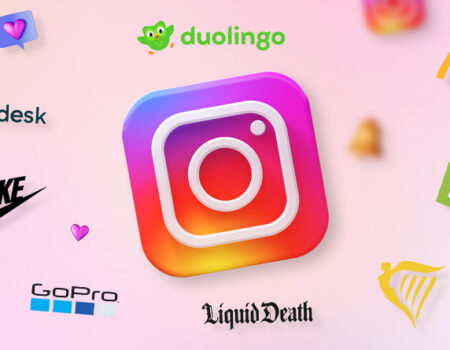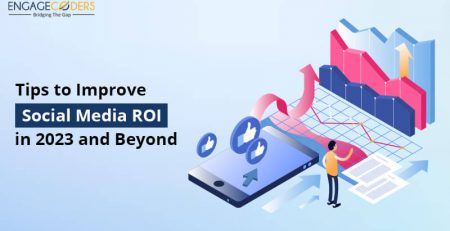My 10-Step Process for Nailing Prospecting on LinkedIn, According to AMP’s CEO
LinkedIn’s growth has been nothing short of extraordinary. With the platform surpassing one billion users last year, it has cemented itself as one of the most powerful tools for sellers seeking to connect with buyers. Yet, despite its incredible potential, many sales professionals still find navigating LinkedIn a confusing and frustrating experience.
If you’re feeling overwhelmed, rest assured — you’re not alone. But with a clear, tested approach, LinkedIn can easily become your biggest pipeline generator. That’s why we’re turning to insights from Morgan J. Ingram, CEO of AMP, who developed a reliable 10-step process for prospecting on the platform.
Whether you’re new to Sales Navigator or a seasoned seller aiming to refine your strategies, these steps offer a roadmap to success.
Morgan J. Ingram’s Tested 10-Step Process for Nailing Prospecting on LinkedIn
1. Start with a Professional Photo
First impressions matter — especially in the digital world. Your profile picture is often the first thing prospects notice, so it must convey approachability and professionalism. Choose a well-lit headshot with a neutral background. Avoid dark, casual, or heavily edited images. When navigating LinkedIn, having a strong visual presence instantly builds trust, nudging your prospect to learn more about you.
2. Lead with a Compelling Headline
Your headline should extend beyond your job title. Simply listing yourself as an “AE” or “SDR” won’t turn heads. Instead, Morgan recommends showcasing the value you bring. For example, “Helping Tech Startups Achieve Seamless AI Integration” immediately signals relevance. When done right, your headline positions you not just as a title holder but as a problem solver — crucial when you’re addressing an ideal customer profile (ICP).
3. Place Additional Media in Your Job Descriptions
One often overlooked opportunity lies within your LinkedIn experience section. You can upload case studies, testimonials, whitepapers, or project highlights to add credibility. Including at least three pieces of media in your job descriptions makes your profile more dynamic and engaging. Remember, with one billion users competing for attention, it’s the small enhancements that make a lasting impact.
4. Pin Down Your ICP
Before you send a single message, you must define your ideal customer profile (ICP). Without clarity on who you’re targeting, your prospecting efforts will feel like throwing darts in the dark. Think about industry, company size, job roles, and geographic regions. Tools like Sales Navigator make it easier to filter prospects according to your ICP parameters, saving you countless hours when navigating LinkedIn.
5. Unpack Your ICP’s Pain Points
Knowing your audience is only half the battle. To truly resonate, you must understand their challenges. Research the most common problems your ideal customer profile (ICP) faces. Speak with your enablement team, scour industry reports, or conduct your own interviews. Bonus tip: if you’re prospecting for tech companies, insights about AI integration are often at the top of the list right now.
6. Craft a Thoughtful Value Proposition
Now that you know your target and their pain points, it’s time to build a value proposition that matters. Focus on the intersection of the problem, your solution, and relevant industry use cases. Keep it crisp. Your prospects — like the other one billion users — are short on time. A thoughtful message about improving AI integration or streamlining business processes will be far more effective than a generic sales pitch.
7. Engage Your Prospects by Leaving Active Comments
One of the most underutilized tactics on LinkedIn is meaningful commenting. Thoughtful engagement on posts that matter to your ICP can open doors that cold messages never will. Instead of bland comments like “Great post,” offer genuine insights or ask sharp questions. This makes you visible — and memorable — in a sea of one billion users. It’s another essential step in navigating LinkedIn effectively.
8. Send Connection Requests (Without a Personalized Note)
It sounds counterintuitive, but Morgan’s testing reveals that connection requests without notes actually get accepted more often. People are naturally wary of long, salesy messages. A clean, simple connection request feels lighter. If they don’t accept after a few weeks, you can withdraw and reattempt later — ideally using Sales Navigator to stay on top of your outreach.
9. Stand Out with a Voice Note
In a crowded inbox, voice notes and videos are rare and refreshing. Very few executives receive personalized video messages, which is precisely why they work. Morgan recommends the 10-30-10 framework: 10 seconds for a warm introduction, 30 seconds for your value proposition (touching on AI integration if relevant), and 10 seconds for a clear call-to-action. Using this method can dramatically improve your chances of converting a conversation into a meeting.
10. Propose Next Steps
Finally, when a prospect shows interest, move decisively. Offer a few specific meeting times or include a scheduling link. For instance: “It sounds like AI integration is a key priority for your team. I’d love to share how we’ve helped similar organizations. Here are a few times that work for me…”
This approach removes ambiguity and makes it easier for your prospect to say yes. And if they don’t respond immediately, a simple, respectful follow-up like “Hi [Name] — any feedback on my message?” keeps the conversation alive without feeling pushy.
Partner with our Digital Marketing Agency
Ask Engage Coders to create a comprehensive and inclusive digital marketing plan that takes your business to new heights.
Conclusion
Mastering LinkedIn prospecting doesn’t require a secret formula — it demands clarity, consistency, and a deep understanding of your target audience.
Morgan J. Ingram’s proven 10-step process equips you to rise above the noise, especially at a time when one billion users are competing for attention. Whether it’s refining your profile, tailoring your outreach to your ideal customer profile (ICP), or leveraging features like Sales Navigator, each step moves you closer to building a pipeline full of meaningful opportunities.
In a world where AI integration and digital transformation are reshaping buyer behavior, sellers who adopt thoughtful, human-centered strategies will win the day. Master these steps, stay curious, and soon, you’ll find yourself not just navigating LinkedIn, but owning it.
Grow your business online with Engage Coders. From web design to digital marketing, we deliver real results. Let’s get started today!








